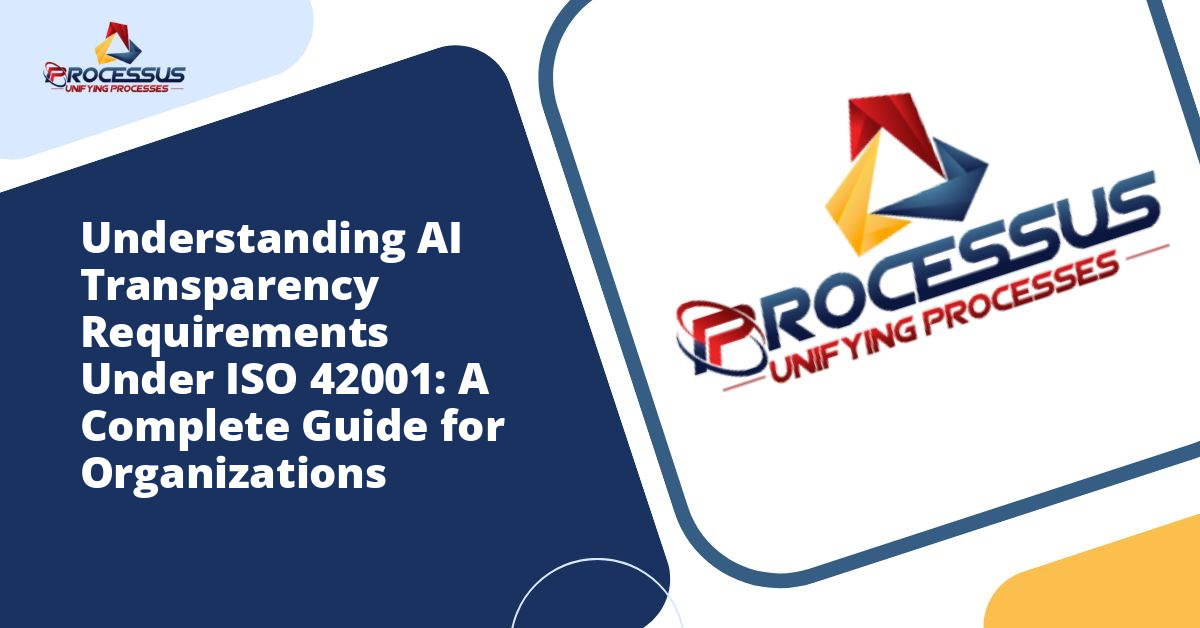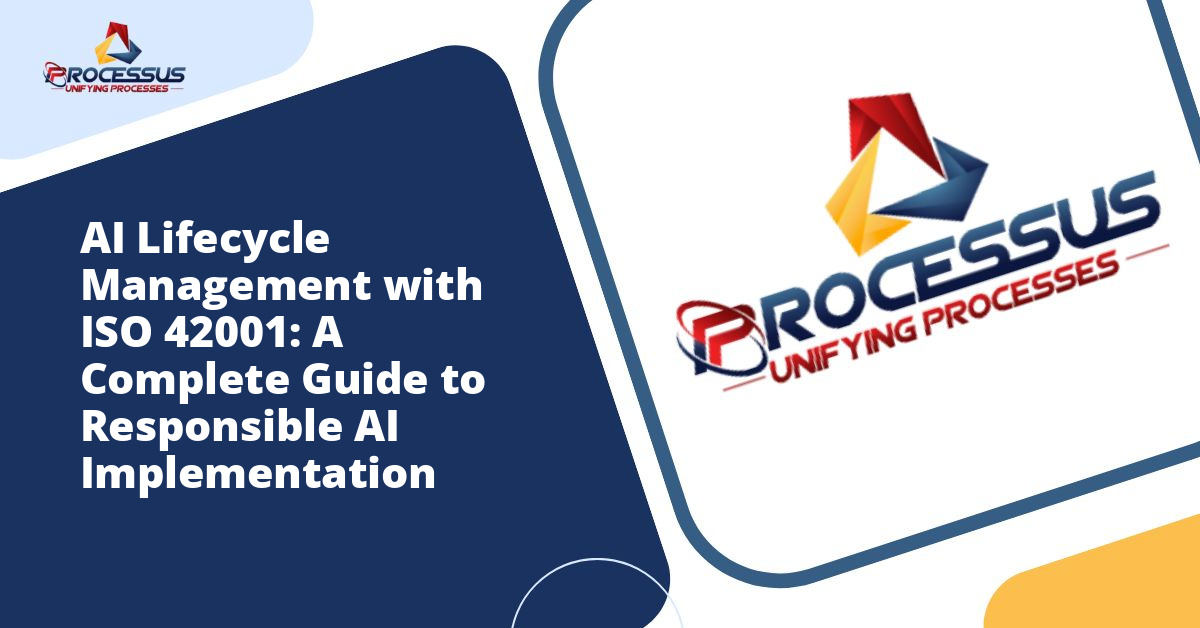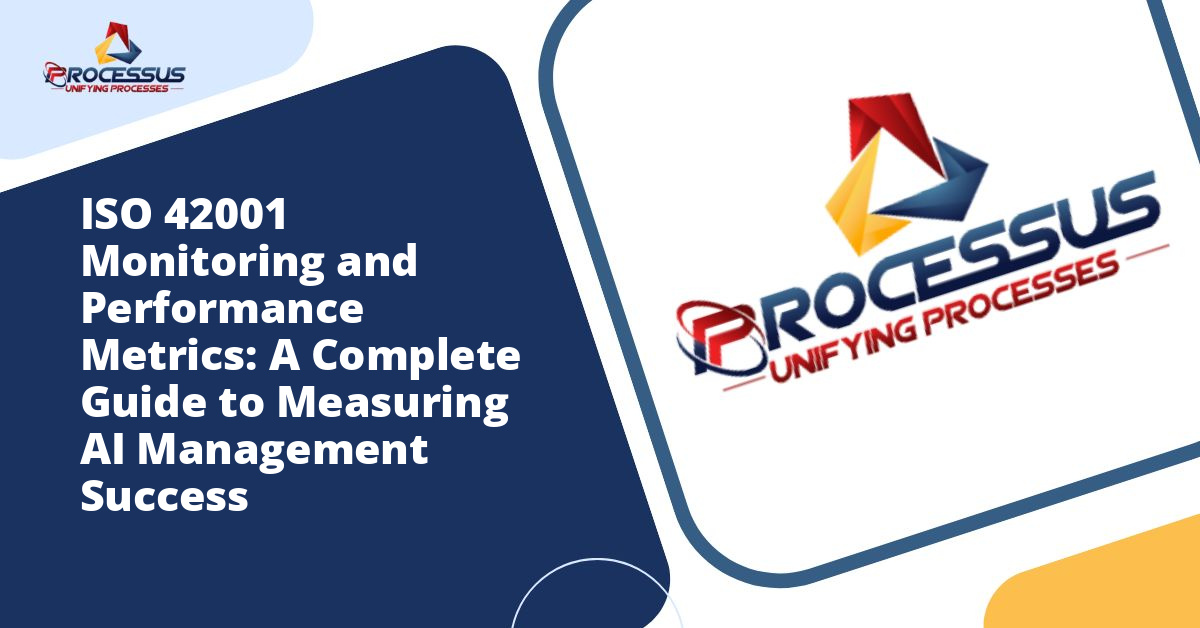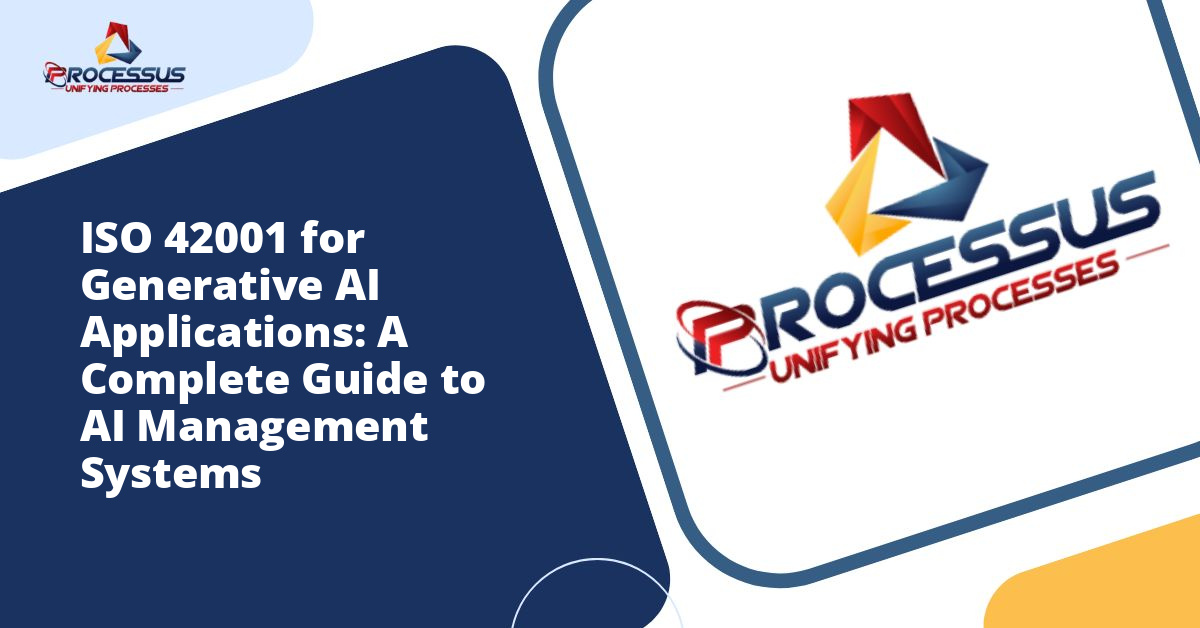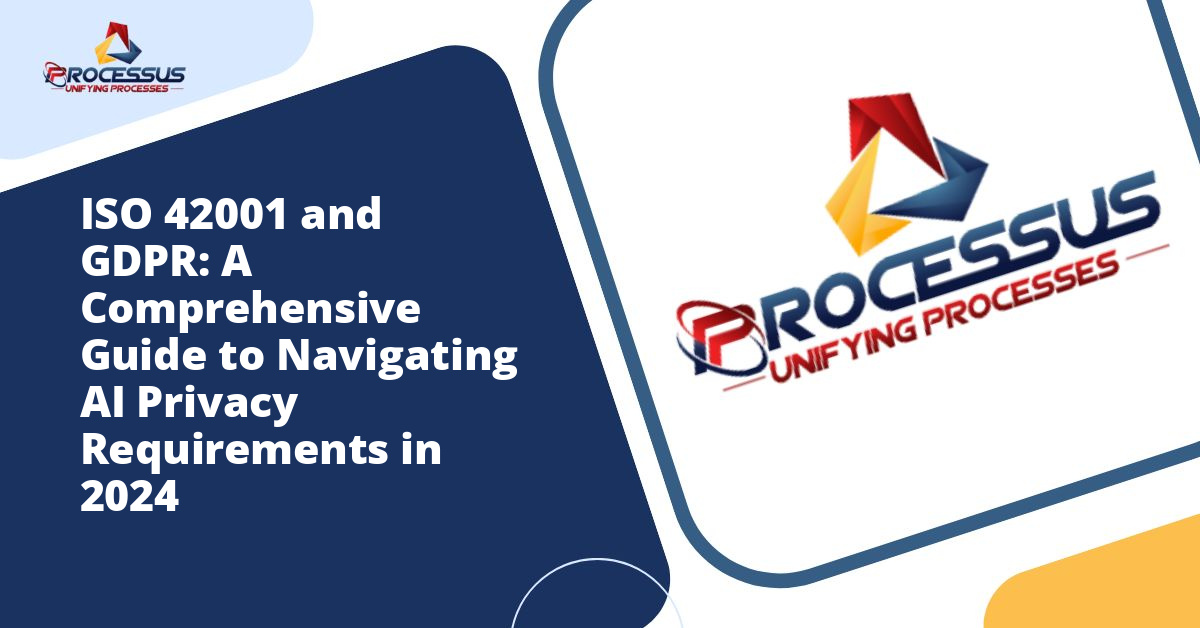The rapid advancement of artificial intelligence has brought unprecedented opportunities and challenges to organizations worldwide. As AI systems become increasingly integrated into business operations, healthcare, finance, and public services, the need for standardized governance frameworks has never been more critical. ISO 42001, the world’s first international standard for artificial intelligence management systems, represents a significant milestone in addressing these concerns through comprehensive transparency requirements.
This article explores the transparency requirements outlined in ISO 42001, examining what they mean for organizations implementing AI systems and how compliance can build trust while mitigating risks associated with AI deployment. You might also enjoy reading about ISO 42001: Understanding the World's First AI Management Standard and Its Impact on Business.
What is ISO 42001?
ISO 42001 is an international standard published by the International Organization for Standardization (ISO) that provides a framework for establishing, implementing, maintaining, and continually improving an Artificial Intelligence Management System (AIMS). Released in December 2023, this standard builds upon the foundation of ISO/IEC 38507 and incorporates principles from the OECD AI Principles and other regulatory frameworks. You might also enjoy reading about ISO 42001 Risk Management for AI Systems: A Comprehensive Guide to Responsible Artificial Intelligence.
The standard applies to organizations of all sizes and types that develop, provide, or use AI-based products and services. It addresses the unique challenges posed by AI systems, including their complexity, potential biases, and the significant impact they can have on individuals and society. You might also enjoy reading about Ethical AI: How ISO 42001 Addresses Bias and Fairness in Artificial Intelligence.
The Foundation of the Standard
ISO 42001 follows the high-level structure common to other ISO management system standards, making it easier for organizations already familiar with frameworks like ISO 27001 or ISO 9001 to implement. However, it introduces specific controls and requirements tailored to AI’s unique characteristics and risks.
The standard emphasizes a risk-based approach, requiring organizations to identify, assess, and mitigate risks throughout the AI lifecycle. Transparency serves as a cornerstone principle, recognizing that stakeholders need adequate information to understand, trust, and appropriately interact with AI systems.
Core Transparency Requirements in ISO 42001
Transparency under ISO 42001 extends far beyond simple disclosure. It encompasses multiple dimensions of AI system development, deployment, and operation. Organizations must demonstrate transparency across various aspects of their AI management systems.
Documentation and Record Keeping
The standard requires organizations to maintain comprehensive documentation throughout the AI system lifecycle. This includes detailed records of design decisions, data sources, training methodologies, testing procedures, and deployment parameters. Organizations must document the rationale behind key decisions, particularly those affecting system performance, safety, or fairness.
This documentation serves multiple purposes. It enables internal audits and continuous improvement efforts, supports compliance verification, and provides necessary information for stakeholders seeking to understand how AI systems operate. The records must be sufficiently detailed that qualified personnel can understand and evaluate the AI system’s behavior and decision-making processes.
Stakeholder Communication
ISO 42001 mandates clear communication with all relevant stakeholders, including customers, end-users, employees, regulators, and affected parties. Organizations must establish processes for identifying stakeholders and determining what information each group needs to make informed decisions about AI systems.
The communication must be appropriate to the stakeholder’s technical sophistication and needs. For technical teams, this might include detailed algorithmic documentation. For end-users, it might involve simplified explanations of how the AI system affects them and their rights regarding automated decision-making.
Explainability and Interpretability
While not every AI system can provide detailed explanations for individual decisions, ISO 42001 requires organizations to implement appropriate levels of explainability based on the system’s risk profile and use case. High-risk applications, such as those affecting employment, credit decisions, or healthcare, demand greater explainability than lower-risk applications.
Organizations must assess whether their AI systems can provide meaningful explanations and, where necessary, implement technical measures to enhance interpretability. This might involve using inherently interpretable models, developing explanation interfaces, or implementing post-hoc explanation techniques.
Implementation Strategies for Transparency Requirements
Successfully implementing ISO 42001’s transparency requirements demands a systematic approach that integrates transparency considerations throughout the AI lifecycle.
Establishing Transparency Governance
Organizations should designate clear roles and responsibilities for transparency management. This typically includes appointing an AI governance committee or officer responsible for overseeing transparency initiatives, establishing policies, and ensuring compliance with transparency requirements.
The governance structure should facilitate cross-functional collaboration between technical teams, legal departments, compliance officers, and business stakeholders. Each group brings essential perspectives on what transparency means in different contexts and how to achieve it effectively.
Developing Transparency Policies and Procedures
Organizations need formal policies that articulate their commitment to AI transparency and outline specific requirements for different types of AI systems and use cases. These policies should address when and how transparency will be provided, what information will be shared with different stakeholder groups, and how transparency will be maintained throughout system updates and changes.
Procedures should detail the practical steps for implementing transparency requirements, including templates for documentation, communication protocols, and processes for handling transparency-related inquiries or complaints.
Technical Implementation Measures
Technical measures for transparency implementation vary depending on the AI system’s characteristics. For machine learning systems, organizations might implement model cards that document key information about the model’s intended use, training data, performance metrics, and limitations.
Logging and monitoring systems capture important operational data that supports transparency objectives. These systems should record inputs, outputs, decision factors, and any anomalies or errors that occur during operation. The logged information helps organizations explain system behavior when questions arise and supports ongoing performance monitoring.
Transparency in Different AI Lifecycle Phases
ISO 42001’s transparency requirements apply throughout the entire AI system lifecycle, from initial conception through decommissioning.
Design and Development Phase
During design and development, organizations must document design choices, including the selection of algorithms, architectures, and training approaches. They should record the objectives the system is designed to achieve, the metrics used to evaluate success, and any constraints or ethical considerations that influenced design decisions.
Data transparency is particularly crucial during this phase. Organizations must document data sources, collection methods, preprocessing steps, and any known limitations or biases in the training data. This information helps stakeholders understand potential system limitations and biases that might emerge from the training data.
Validation and Testing Phase
Transparency during validation and testing involves documenting test methodologies, test datasets, performance results, and any issues discovered during testing. Organizations should be transparent about both successful and unsuccessful test outcomes, as failures often provide valuable insights into system limitations.
The standard requires organizations to test AI systems across different scenarios and populations to identify potential disparate impacts or performance variations. These testing results should be documented and, where appropriate, communicated to relevant stakeholders.
Deployment and Operations Phase
Once deployed, organizations must maintain operational transparency by monitoring system performance, documenting changes or updates, and tracking incidents or complaints. Users should receive clear information about when they are interacting with an AI system and how it affects decisions or services they receive.
Organizations need mechanisms for users to seek additional information about AI-driven decisions that affect them. This might include interfaces for requesting explanations, processes for human review of automated decisions, or channels for raising concerns about system behavior.
Monitoring and Continuous Improvement Phase
Ongoing monitoring generates transparency-relevant information about how AI systems perform in real-world conditions. Organizations should be transparent about performance metrics, drift detection, and any corrective actions taken to address identified issues.
Regular reviews and audits of AI systems should assess whether transparency measures remain adequate and effective. As systems evolve and new risks emerge, transparency approaches may need adjustment to maintain appropriate stakeholder understanding and trust.
Challenges in Implementing Transparency Requirements
While transparency offers significant benefits, organizations face several challenges in implementing ISO 42001’s requirements effectively.
Balancing Transparency and Intellectual Property
Organizations often express concern that transparency requirements might compromise proprietary algorithms or trade secrets. ISO 42001 recognizes this tension and does not require disclosure of all technical details. Instead, organizations must find appropriate ways to provide meaningful transparency without revealing sensitive intellectual property.
This balance might involve explaining what the system does and how it makes decisions at a conceptual level without disclosing the precise algorithmic implementations. Organizations can focus on outcomes, capabilities, and limitations rather than proprietary technical details.
Technical Complexity and Explainability Limitations
Some AI systems, particularly deep learning models, are inherently difficult to explain in intuitive terms. While research continues to advance explainable AI techniques, current methods have limitations. Organizations must acknowledge these limitations transparently while implementing the best available explainability approaches for their context.
The standard recognizes that perfect explainability is not always achievable or necessary. The appropriate level of explainability depends on the system’s risk profile, use case, and stakeholder needs.
Resource and Expertise Requirements
Implementing comprehensive transparency measures requires significant resources, including specialized expertise in AI systems, documentation capabilities, and communication skills. Smaller organizations may face challenges in allocating sufficient resources to transparency initiatives.
Organizations can address this challenge through phased implementation, focusing first on high-risk AI systems where transparency is most critical. They might also leverage external expertise, standardized tools and templates, or industry collaborations to share best practices and reduce individual implementation burdens.
Benefits of Compliance with ISO 42001 Transparency Requirements
Despite implementation challenges, organizations that embrace ISO 42001’s transparency requirements realize significant benefits.
Enhanced Trust and Stakeholder Confidence
Transparency builds trust among customers, employees, regulators, and the public. When stakeholders understand how AI systems work and can verify that they operate fairly and reliably, they are more likely to accept and engage with these systems. This trust is increasingly valuable as concerns about AI risks grow.
Improved Risk Management
The documentation and communication processes required for transparency support better risk identification and management. By systematically documenting AI systems and their operation, organizations gain better visibility into potential risks and can take proactive mitigation measures.
Transparency also facilitates more effective incident response when issues arise. With comprehensive documentation and clear communication channels, organizations can quickly understand what went wrong and communicate effectively with affected stakeholders.
Competitive Advantage
As regulatory requirements around AI increase globally, organizations with robust transparency practices are better positioned to comply with evolving regulations. ISO 42001 certification demonstrates commitment to responsible AI practices, potentially providing competitive advantages in markets where customers and partners value ethical AI.
Internal Process Improvements
The discipline of documenting decisions, maintaining records, and explaining AI systems often reveals opportunities for improvement in AI development and deployment processes. Organizations frequently discover inefficiencies, inconsistencies, or risks they had not previously recognized through the transparency implementation process.
Future Outlook for AI Transparency
AI transparency requirements will likely continue evolving as technology advances and societal expectations shift. ISO 42001 provides a current framework, but organizations should anticipate future developments.
Regulatory landscapes are rapidly changing, with jurisdictions worldwide implementing AI-specific regulations. The European Union’s AI Act, for example, imposes stringent transparency requirements for high-risk AI systems. Organizations implementing ISO 42001 will be better prepared to adapt to these emerging regulatory requirements.
Technical capabilities for explainability and interpretability continue to improve. Organizations should stay informed about advances in explainable AI techniques and be prepared to adopt new approaches that enhance transparency as they become available and practical.
Stakeholder expectations around transparency are rising. As awareness of AI systems grows, people increasingly expect clear information about when AI affects them and how it works. Organizations that proactively embrace transparency position themselves to meet these evolving expectations.
Conclusion
ISO 42001’s transparency requirements represent a comprehensive framework for ensuring AI systems operate in ways that stakeholders can understand, trust, and appropriately engage with. While implementation presents challenges, the benefits of enhanced trust, improved risk management, and better preparation for regulatory compliance make these efforts worthwhile investments.
Organizations should view transparency not as a compliance burden but as a fundamental principle of responsible AI development and deployment. By embracing transparency throughout the AI lifecycle, documenting decisions and processes, communicating effectively with stakeholders, and continuously improving their approaches, organizations can realize the full potential of AI while managing its risks responsibly.
As AI continues to transform industries and societies, those organizations that prioritize transparency will be best positioned to build lasting trust, navigate evolving regulations, and create AI systems that genuinely serve human needs and values. ISO 42001 provides the roadmap for this journey, but success ultimately depends on organizational commitment to transparency as a core value in AI governance.

